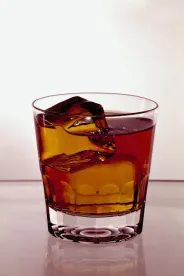As consumers continue to trend toward more health-conscious options, including in their choice of alcoholic beverages, the Alcohol and Tobacco Tax and Trade Bureau (TTB) has responded with guidance on health-related marketing claims in a four-part weekly newsletter. The guidance is in response to what TTB categorized as an “increasing number of alcohol beverage advertisements…suggesting a relationship between alcohol beverage consumption and purported health benefits or effects” and provides industry members general guidance utilizing specific examples to help the industry navigate marketing in this space.
As a reminder, the TTB prohibits industry members from making any health-related statement in advertising that is (1) untrue or (2) tends to create a misleading impression of the effects of alcohol consumption on health.
Throughout the four-week focus, TTB provided some examples of unsubstantiated advertising statements that suggest consuming a particular alcohol beverage will mitigate health consequences typically associated with alcohol consumption that would be considered prohibited:
-
“No headaches”
-
“Hangover free”
-
“Diabetic friendly”
TTB also provided examples of unsubstantiated advertising statements that suggest consuming an alcoholic beverage will result in health benefits that would also be considered prohibited:
-
“Recovery drink”
-
“Anti-inflammatory”
-
“Aphrodisiac”
-
“Health benefits”
In week three, TTB weighed in on the use of the term “clean” in alcohol labeling and advertising. TTB reminded readers that it does not define the word “clean,” nor does it have a standard for the use of the term on labels or in advertisements. Accordingly, it alerted consumers that the use of the term should not be interpreted as suggesting a product is organic or has met any other production standard set by TTB. Whether the use of the term is permissible depends upon the totality of the label or the advertisement in which the term appears.
TTB did provide some examples of when the term is used permissibly and when its use may be misleading:
-
If the term “clean” is used as a descriptor for the taste of the beverage and is considered puffery, it may be used permissibly. For example, “X winery makes clean, crisp wine.”
-
If the term “clean” is used in a way that suggests that consumption of alcohol will have health benefits and/or that the health risks otherwise associated with alcohol consumption will be mitigated, the term’s use may be prohibited. For example, “X malt beverage is clean and healthy” or “Y vodka’s clean production methods mean no headaches for you.”
The final iteration of the four-part series reminded readers simply that “TTB advertising regulations prohibit any health-related statement that is untrue in any particular or tends to create a misleading impression as to the effects of alcohol consumption on health.”
With the amount of attention the TTB has dedicated to this area, we encourage industry members to monitor health-related advertising and marketing closely.




 />i
/>i

